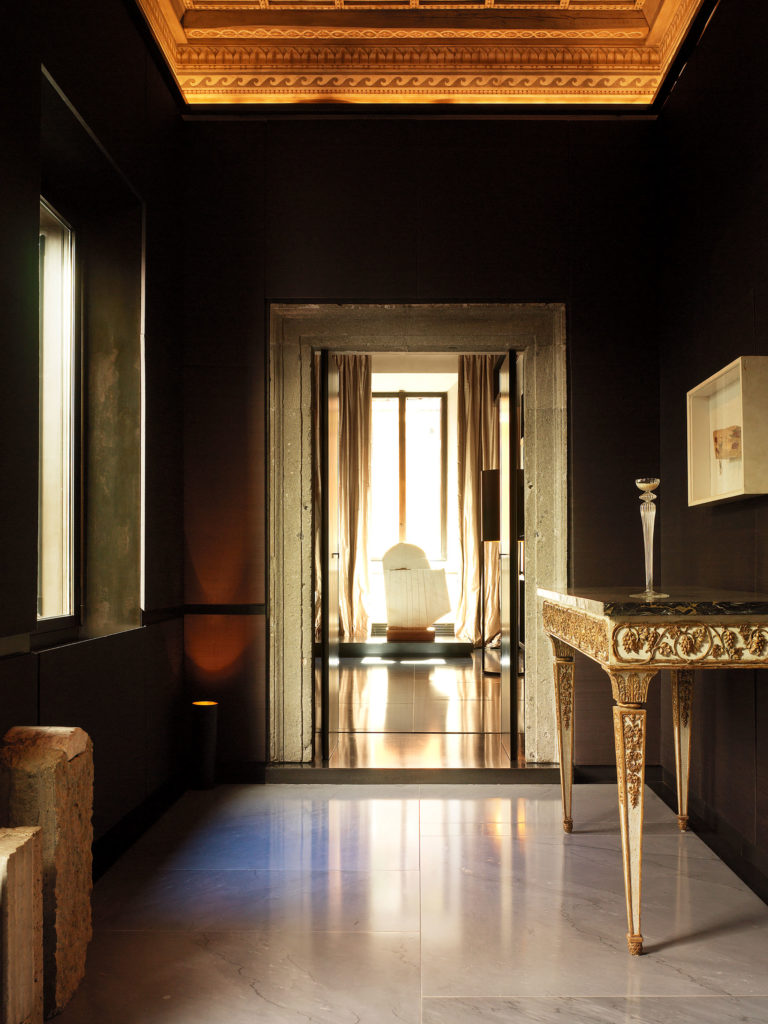APARTMENT IN VIA GIULIA, ROME
Italy [2002-2005]
LPA Collaborators: Giuseppe Postet, Eva Christine Schenck, Guillaume Téton
Photo Credits: Matteo Piazza
This renovation of an apartment in the historic centre of Rome was custom tailored to meet the needs and personalities of the client, with whom the office shares a long-standing relationship of collaboration and an exchange of ideas.
The two storey flat is located in a Renaissance palazzo designed by Giacomo della Porta. This condition would greatly influence the design concept, focusing it on the delicate balance between introducing a contemporary sign and the need to respect the existing sixteenth century volume.
The client’s requests also included the necessity to house a prestigious collection of Italian art consisting of works by such authors as Fontana, Burri, Viani, Melotti and Consagra. Three simple elements in waxed natural steel structure the spaces of the apartment, integrating art and furnishings: a slender floor marker, set into the wall, a baseboard concealing electrical cabling, a bar-rail that runs the perimeter of the ceiling used to hang drapery and support lighting. The perimeters of the floors are framed by a steel cornice that helps regularise the plan and, slightly raised, similar to a carpet, creates a relief to the marble paving.
Double leaf steel doors are set into the apartment’s ancient travertine jambs without touching them, reinforcing the gentle dialogue between the contemporary and the existing that is never invasive. A tunnel finished in leather, conceived as an independent volume, links the master suite, one of the children’s rooms, the wardrobe and the guest bathroom. Floor lighting, a recurring element in the work of Lazzarini Pickering, features copper mesh shades reminiscent of the torches that once lit the palazzo’s rooms.
Another important theme is to be found in the creation of cantilevered volumes for the steel surface of the kitchen and the veined marble washbasins and bathtubs. “We imagined them as monoliths floating in a void, evoking a contemporary sense of the wonders and marvels of the Baroque”, the architects tell us.




















